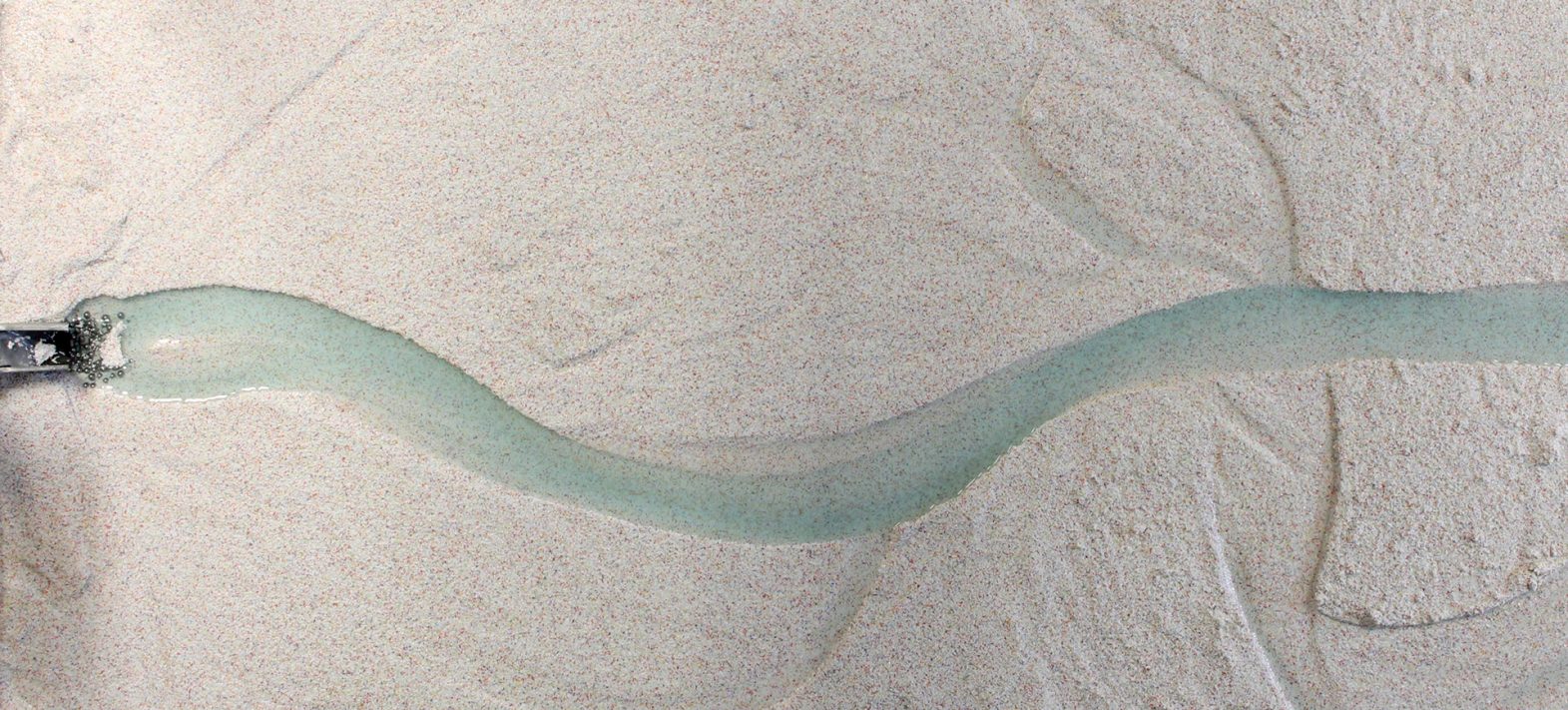Rivers shape much of the landscape around us. They slowly erode mountain rocks, carry them as sediment, transport them over long distances, then deposit them to form vast river basins, like the Amazon.
Rivers are more than just canals. Their beds are constantly exchanging sediment with the flowing water, enabling them to adapt to the flow of water and sediment. Rivers that carry a lot of sediment are usually wide and shallow, and their beds can shift to form meanders or braids.
Even so, predicting the shape of a river based on its sediment flow is no simple task. After all, it’s the smallest deviations from equilibrium that set sediment in motion, rendering approximate theories ineffective. What’s more, a sediment-carrying river is subject to the “stable channel paradox” – the theory predicts that sediment mobility in a river will lead to inexorable erosion of its banks. A bed that does not erode, then, seems incompatible with sediment transport. This question of riverbed shape and stability was first addressed by Gary Parker, who in 1978 proposed a theory according to which friction within the flow is able to keep the edges in equilibrium while allowing sediment to move along a flat bottom. But this theory has never been tested experimentally, and its implications have received little scrutiny due to its considerable complexity in relation to the behavior of turbulent flows.
In a study published on December 7 in the journal PNAS, a team from the Institut de Physique du Globe de Paris and the Institut Jean Le Rond d’Alembert have attempted to understand the mechanics of sediment-transporting rivers. To keep the problem as simple as possible, the team’s scientists used small rivers (around 5 cm wide and 1 cm deep) created in the laboratory by flowing a viscous fluid (a mixture of water and glycerol) through a bed of plastic sediment, into which the sediment was fed at an adjustable rate. The high viscosity of the fluid rendered the flow laminar, considerably simplifying the problem compared with natural turbulent flows.
In a study published on December 7 in the journal PNAS, a team from the Institut de Physique du Globe de Paris and the Institut Jean Le Rond d’Alembert set out to understand the mechanics of sediment-transporting rivers. To keep the problem as simple as possible, the team’s scientists used small rivers (around 5 cm wide and 1 cm deep) created in the laboratory by flowing a viscous fluid (a mixture of water and glycerol) through a bed of plastic sediment, into which the sediment was fed at an adjustable rate. The high viscosity of the fluid rendered the flow laminar, considerably simplifying the problem compared to natural turbulent flows.
By varying the sediment flow rate, they were able to observe a variation in the shape of the riverbed. Based on these experiments, they created a mathematical model of the bed shape and sediment transport intensity profile that matched the measurements very well. As the experimental rivers are always close to the threshold of sediment movement, the intensity with which they transport sediment cannot exceed a certain limit, causing the river to widen as their sediment load increases.
This limit is determined by friction within the flow – exactly as theorized by Gary Parker. This study is thus the first demonstration of Parker’s theory under controlled laboratory conditions. However, for low sediment flows, the team of geomorphologists discovered another regime for which Parker’s theory is no longer valid. In this regime, the shape of the river no longer changes as a function of sediment flow, and the mobilized sediments behave like hot gas particles in the gravity field, their density obeying the famous Boltzmann distribution as a function of altitude. This new regime thus bridges the gap between rivers that transport no sediment and those obeying the Parker regime, which transport a lot of sediment.
This study explains how and why a river changes shape in response to a sediment load. And by inverting this model, the study also shows that a river’s sediment discharge can be estimated by measuring its shape. If this theory is verified under natural conditions, it could significantly facilitate assessments of sediment load, an important piece of information for many geological studies, but notoriously difficult to measure in the field.
Ref : Sediment load determines the shape of rivers, Predrag Popović, Olivier Devauchelle, Anaïs Abramian, Eric Lajeunesse, Proceedings of the National Academy of Sciences Dec 2021, 118 (49) e2111215118; DOI : 10.1073/pnas.2111215118









